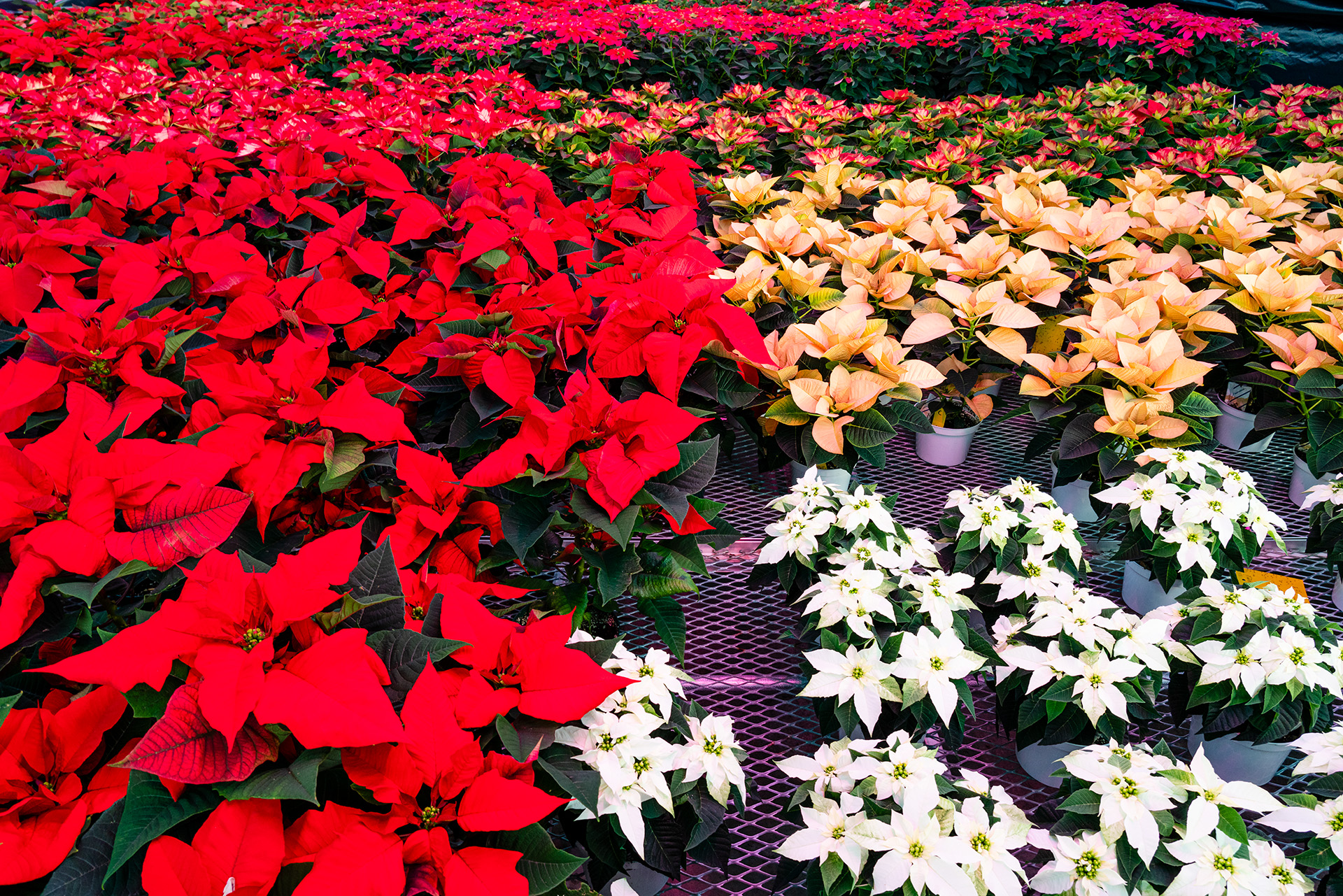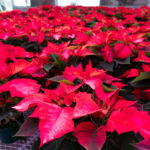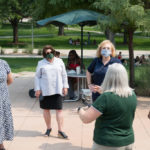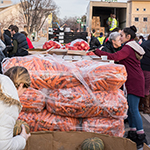
This year marked the CSU Horticulture Center’s 28th annual poinsettia sale, held on Dec. 2 and Dec. 4.
Each year, students in the department’s floriculture practicum grow the plants to be sold in December. The tradition gives the students great hands-on experience and spreads holiday cheer throughout the Fort Collins community.
“We want to make sure students are getting experience with techniques and equipment they will encounter when they graduate and enter the horticulture industry,” said Mike Hazlett, research associate with the Horticulture Center.
Some techniques remain simple, however. Every night students cover the plants with a light-blocking tarp to simulate fall’s shorter days, which triggers the dramatic change in color. Even a little bit of intrusive light, for example from a streetlamp, can disrupt the flowering process, and the plants will remain green.
All proceeds will funnel back into the horticulture program, ensuring future students have access to the prized experiential learning the practicum provides.
Hazlett added that the annual sale is an important community engagement opportunity where students can interact with customers and see the impact of their efforts. It’s also a chance to showcase the students’ achievements. “They put in a lot of hard work all semester to produce a high-quality crop, and they’re proud to share their work,” he said.
Colors
Poinsettias most commonly are a bright red color, hence the popularity during the holidays, but they also can come with pink, white, yellow, salmon or multi-colored leaves. In fact, there are over 100 varieties of the plant.
Although these flowers make a great gift for a loved one or a lovely centerpiece at the dinner table, they can be tricky to take care of. They require the right temperature, sunlight and amounts of water.
Ironically, the plant that often represents the holiday season is native to warm, tropical climates. Physician and botanist Joel Roberts Poinsett introduced poinsettias to the United States from Mexico in 1825. Due to their origin, it is best to keep poinsettias away from drafty areas of the house.
Poinsettias also require lots of sunlight. They should be placed in south-, west-, or east-facing windows. However, beware of cool windows – when the poinsettia’s leaves, called bracts, touch the cold glass, they will wither up and fall off.
To keep poinsettias healthy and growing, they must be watered correctly. The plant should be watered when the soil is noticeably dry. It is important to avoid over-watering poinsettias as well. Overwatering of poinsettias can lead to root issues as well as bract/leaf drop. A sign of overwatering is the bracts turning yellow and falling off. If ever in doubt, it is best to under-water poinsettias rather than over-water them.
Another thing to watch out for when taking care of a poinsettia is the sap. The plant oozes a milky substance that can irritate the skin after contact. The sap can also cause nausea in pets. Additionally, contrary to popular belief, poinsettias are not poisonous, but if eaten they can induce vomiting.
Although poinsettias can be a more difficult plant to take care of, they are beautiful additions that can spruce up any room in the house.
–Micha Bennett contributed to this story.



































































































